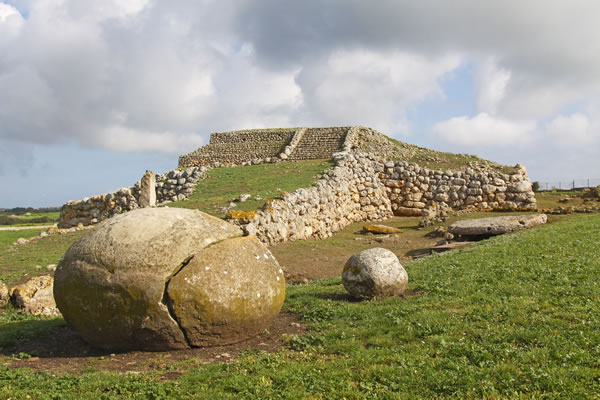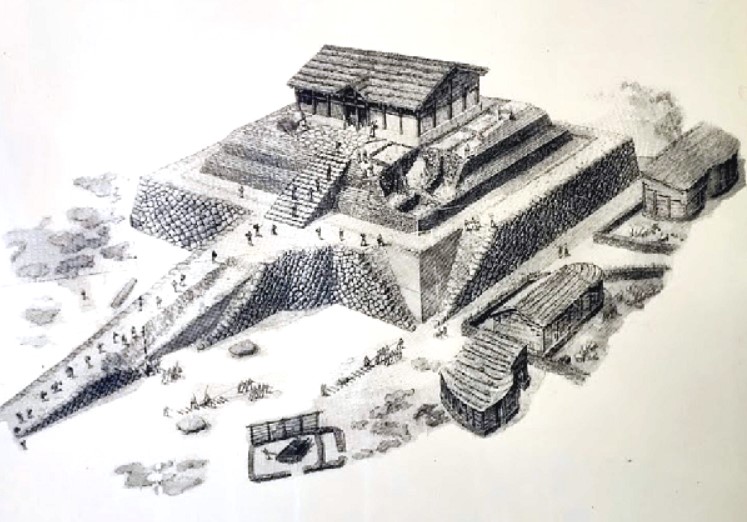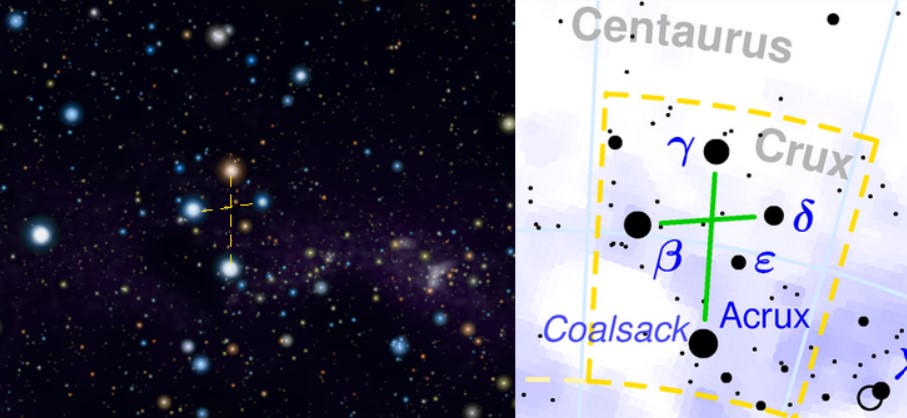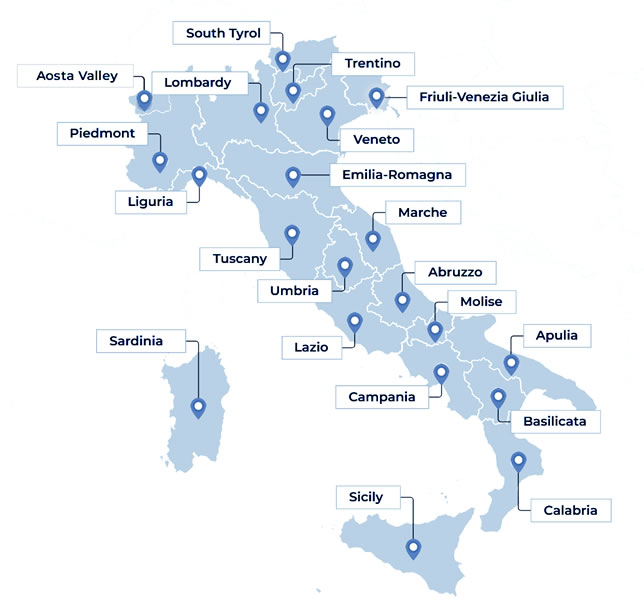

Explore Italy by place | region | time period
The Neolithic Age » Sassari (Monte d'Accoddi, Sardinia)
During World War II, some soldiers dug a defensive trench at the base of a hill in the plain Nurra, in north-western Sardinia, it was on the Mount of Accoddi (from the archaic kodi, stone). While they deployed anti-aircraft artillery, they damaged one of the island’s most unique and ancient treasures unwittingly and unknowingly, which was buried for millennia of history.
That ground belonged to the family Segni and, in 1952, one of its members Antonio Segni - that is to become the fourth President of the Italian Republic ten years later - convinced the young archaeologist Ercole Contu to dig first on that hill, because he played there when he was a child and knew the site.
Antonio Segni was convinced that the low hill in the middle of the plain was artificial. According to him, there was something mysterious, perhaps it was one of the many nuraghi in the area. About 7000 nuraghi were erected in Sardinia: most of them were destroyed in various periods, the rest is still buried or unknown, and few have been brought to light entirely.
The discovery was even more surprising. Contu initially found many objects dating back to the Neolithic period. But only after thirty years, the excavations unearthed the real treasure of inestimable archaeological value, a prehistoric altar belonging to a period of much earlier than the one nuragic.

Undoubtedly, it is among the most mysterious archaeological monuments of Sardinia. It’s unique not only on the island but also throughout the Mediterranean basin and in Europe, because it has no similarities with any other construction. Similar buildings were located 4000 kilometers away in Mesopotamia. Some ziqqurath - such as that of Anu in the ancient Sumerian city of Uruk - are also contemporary to the altar. In fact, the first construction of the altar of Monte d'Accoddi dates back to the second half of the fourth millennium BCE (about 3500 BCE). It is a monument similar to the Mesopotamian ziqqurat but with a substantial difference: the Sardinian one is built of stone (megalithic technique) while those of Mesopotamia in resistant sun-dried mud bricks.

Like the ziqqurat, the altar was considered the highest place where man could approach the divine. It was a terraced structure with a truncated pyramid shape, and had a very long access ramp leading to the rectangular top of the altar and ideally elevated men in the sky. The remains of a cell were found on this platform. They constitute a chapel called red temple because traces of ochre were found on its walls. They were plastered and painted with red and yellow ocher, and with traces of black (charcoal). In fact, since the Paleolithic, this pigment had a symbolic value linked to the regeneration of the deceased and the color of blood in funeral rituals. The floor and parts of a perimeter wall remain in the sacred environment.
On the right side of the ramp, there are:
- A stone altar used to make sacrifices; it was a huge slab with holes that may be served to tie the animal victims.
- Two stone spheres; the largest is one meter high and has a circumference of 5 meters,and is crossed by small circular incisions; it would represent the Sun, while the smallest the Moon.
On the left side there are:
- Two menhir placed a short distance from each other; the highest is about four and a half meters.
The altar is an overlap of two architectural phases:
The second sanctuary recalls the ziqqurat with an open-air altar. A structure larger than the previous one that occupies an area of 1600 square meters and is almost six meters high (originally maybe eight). Inside, an unexplored chamber: perhaps, like in Mesopotamia, it contains the sacred bed where the ritual of regeneration of life and fertility of the earth was fulfilled.
The altar kept its religious function for a millennium: at its foot were found remains of sacred food and objects used in propitiatory rites. The site was abandoned around 1800 BCE and occasionally reused for burials as in Roman times.

According to scholars, the altar of Monte d'Accoddi was an ancient place of worship, whose symmetry resumed the design of the stars of the Southern Cross in ancient times. It is the smallest of the 88 modern constellations, but also the brightest and unmistakable shape: the arrangement of its stars perfectly resembles that of a cross and is easily recognizable. The orientation of the terrestrial axis has changed compared to five thousand years ago, so today there is no longer this correspondence. Today, the entire constellation is observed south of the 27th parallel north; it is clearly visible in the nations located in the southern hemisphere, such as Australia, Brazil and New Zealand, which have taken up it as a symbol of their southern geographical position.

In order to know more, you can visit:
- Wikipedia: [1]
This page was last edited on 8 June 2024

Open in Google Maps and find out what to visit in a place.
Go to: Abruzzo | Aosta Valley | Apulia | Basilicata | Calabria | Campania | Emilia Romagna | Friuli Venezia Giulia | Lazio | Liguria | Lombardy | Marche | Molise | Piedmont | Sardinia | Sicily | South Tyrol | Trentino | Tuscany | Umbria | Veneto

Text and images are available under the Creative Commons Attribution-ShareAlike License 4.0; - italystudynotes.eu - Privacy